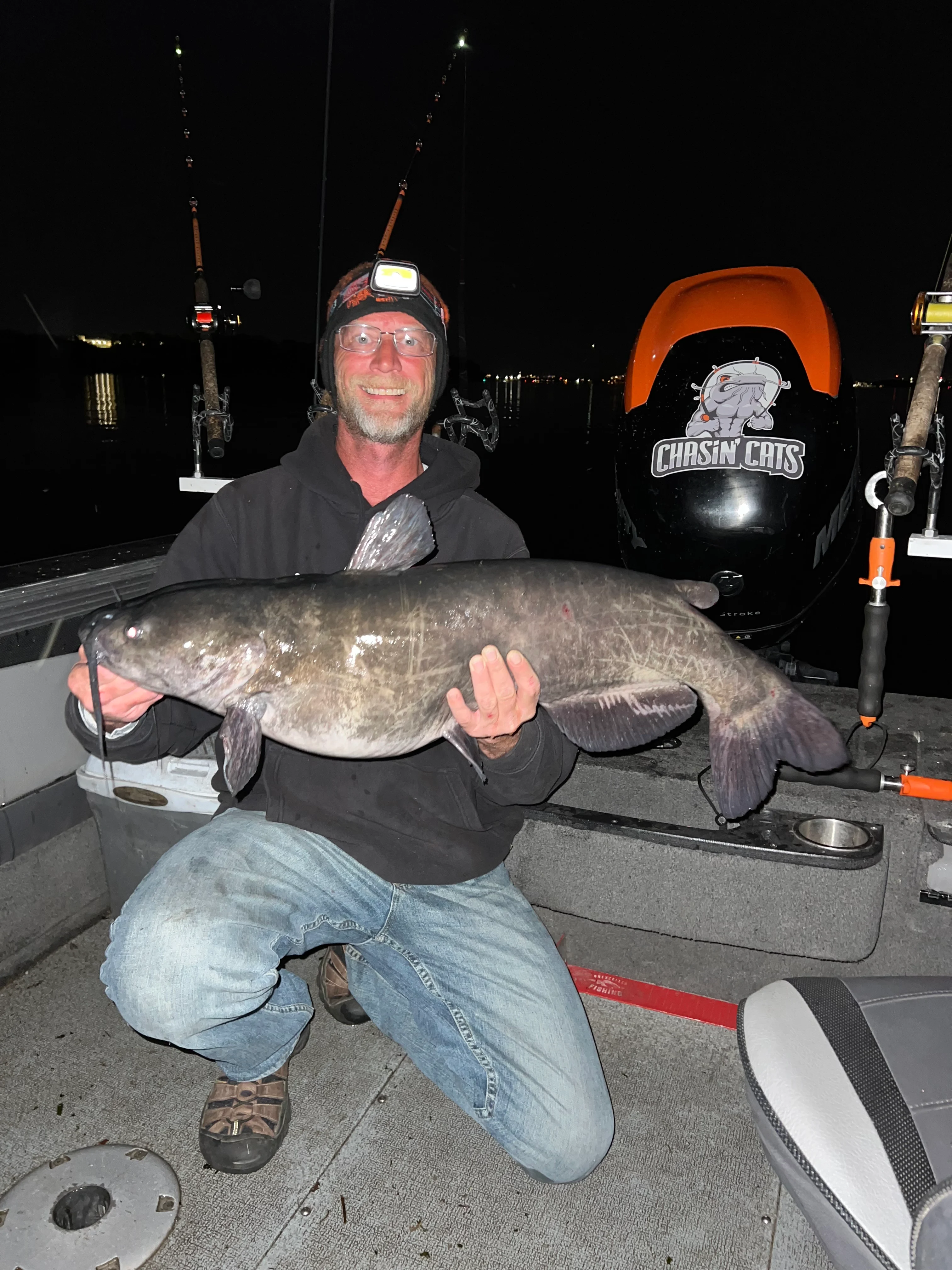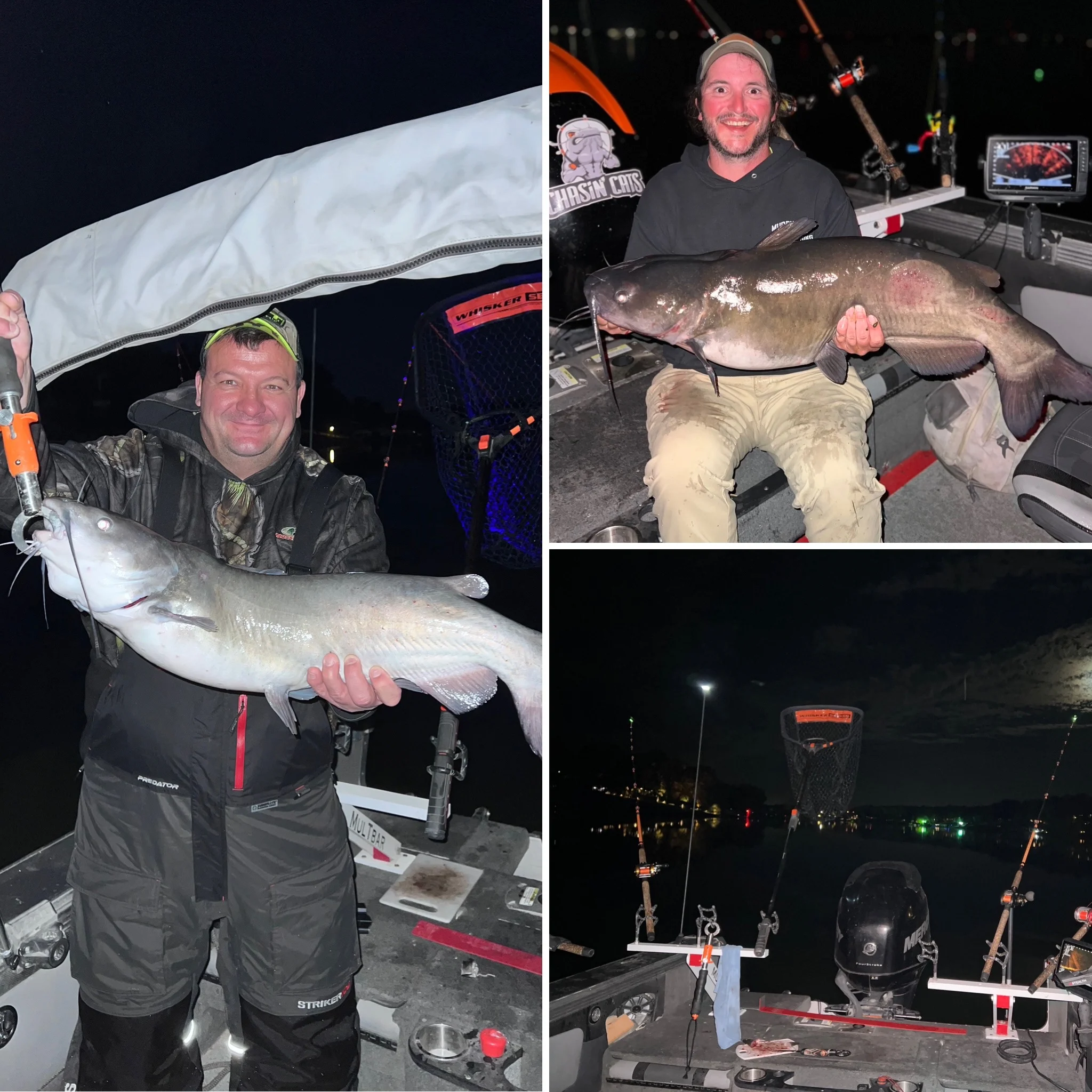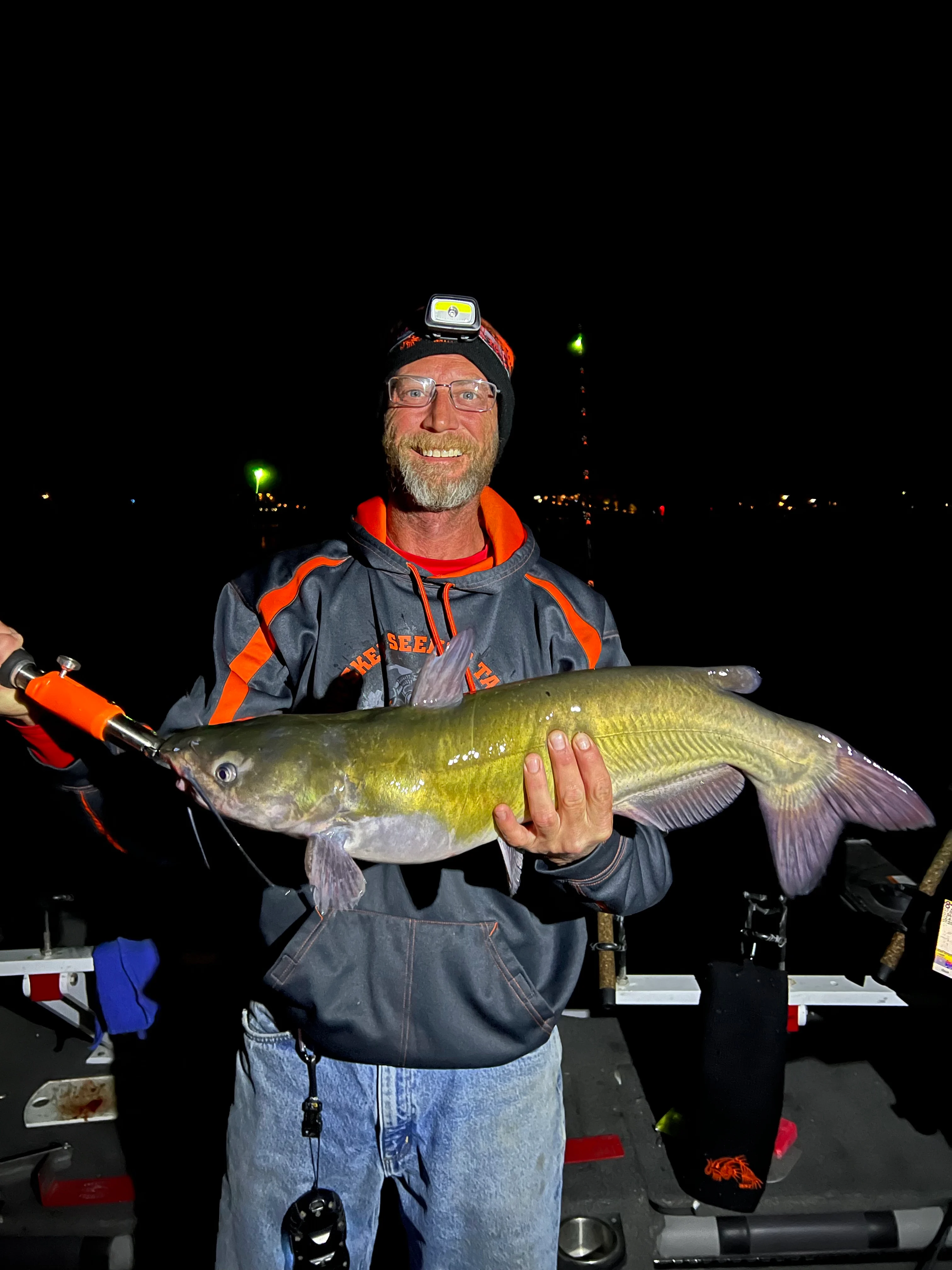For me, some things just go together. Burgers and chocolate banana milkshakes. Tie-dye t-shirts and 1971 VW Bay Window buses. And catfishing after dark with my little brother. Channel catfish eat something roughly every four hours, meaning there’s a catfish gobbling something somewhere every minute of every day. And that includes after dark, which, for many catfish fanatics, is one of the best times to wet a line and fill a cooler.
Jimmi Brown certainly thinks so. A resident of Montezuma, Iowa, Brown owns and operates Chasin’ Cats Guide Service, an outfit specializing in putting anglers on catfish of all sizes, especially big channel cats. A tournament catfisherman since ’93, Brown is a member of the Whisker Seeker Tackle pro team and an obsessed catfish angler.
Brown fishes whenever he can, but he spends quite a bit of his time roaming the waters of central Iowa after sundown in search of his forked tail quarry. I had the chance to sit down with Brown to discuss the art of catching catfish in the dark.

Q: Why catfish, Jimmi? What’s the attraction and why the popularity?
While I don’t want to speak for every person on the planet, for me, it’s the opportunity to catch a one-pound fish or a 30-pound fish.
Q: Do channel catfish act differently after dark?
I think that’s a bit of a misconception. I grew up tournament fishing in the 1990s, and every catfish tournament was held at night. We’d fish from 7 pm to 7 am or 8 pm to 8 am. That was done primarily to stay out of the heat during the summer. Ultimately, it helps keep you away from the pleasure boaters, so we pretty much had the lake to ourselves after dark. But catfish feed all the time. There have been studies done that claim [a channel catfish] feeding cycle is every four hours, so there are fish feeding somewhere.
Q: Dusk. Dawn. Midnight and full dark. Does the time of night make a difference?
Generally speaking, the fish seem to be a little more active right when that sun’s going down. And that’s usually because the baitfish are on the move then. When the baitfish are up shallow, the cats are going to be up shallow. They’re going to go where the food is.

Q: Can you fish in the same location at midnight that you did at noon, or are you looking for different water?
You shouldn't because when that sun gets high in the middle of the day, those fish typically move out of the shallows and go a little deeper. If I was fishing at noon, I’d be looking for 10 to 20 feet of water. As the sun starts going down, then you can start moving shallower.
Q: Is two feet too shallow?
Never. We’ll often fish slip bobbers right up against the bank. Rocks, jetties, weedlines. Any place those fish can ambush prey, that’s a prime target.
Q: Unless you’re a cat or an owl, you’re going to be using some type of light source. What are your thoughts on lighting?
Back in the ‘90s, when I was tournament fishing, we’d hang lanterns in the boat. And then we'd deal with all the moths and mosquitos and mayflies. We got smart real quick and ditched the lanterns and switched to ultraviolet (UV) black lights. At the time, there were only one or two companies that offered monofilament fishing line that glowed under a black light. But the change allowed us to run only our bow and stern lights. No interior boat lights. And then we mounted 12-volt UV black lights on the sides of our boats.
Q: Let's talk baits. Cut bait? Stink bait? Crawlers? Does it matter?
My bait selection depends on water temperature and time of year. During ice-out, I’m using small baits the size of a quarter or maybe a 50-cent coin. By the time fall comes, I’m pulling big baits. The head off a 10-inch bluegill or a 12-inch crappie. I’ll run a Santee Cooper rig with a crappie or bluegill head and another one with chunks or sides or cut bait. I’ll use shad on reservoirs that have shad. But I’ll always have bluegill, crappie, creek chubs, and white bass as cut bait. There are times when shad out-performs all other kinds of bait, and there have been many trips where they won’t eat anything but a bluegill or a crappie. I always have multiple baits with me.

Q: A Google search for catfish rigs turns up approximately 8.34 million results. Do you have a go-to rig, or does it change depending on the situation?
It does depend. Right after ice-out, I’m throwing very small weights—say, a ¼- to ½-ounce—just to get the baits away from the boat. Some, I’m not using a weight at all; just a piece of cut bait on a circle hook and that’s it. Sometimes, those early ice-out cats can be finicky or weight-sensitive. I would say, though, that over 90 percent of the time, I’m running a Santee Cooper rig, often with Whisker Seeker’s Ultra-Chub float system. It’s a hard-bodied float with rattling beads inside.
Q: What is your rod, reel, and line preference?
I have two favorite rods, depending on the situation. If I’m targeting channel cats at, say, Red Rock (an Iowa upground impoundment known for excellent catfishing) and the average size of those fish are between two to nine pounds, I’ll run the Catfish and Carp rod with 20-pound mono. I do have some reels set up with 30-pound mono, and I run that where there are opportunities to catch (bigger) flatheads. The reels are Whisker Seeker 60 Series and Pro 60 Series baitcasters, and my lines are also from Whisker Seeker, which glow under the black light.
Q: You’re primarily a catch-and-release angler, Jimmi, though your clients will occasionally keep some smaller cats to eat. Is conservation with a species like channel cats important? Is releasing those bigger fish a good thing?
Absolutely. And the reason is that it takes so long for a channel cat to grow big. They don’t grow as fast as a bluegill or crappie or bass. And my customers know that when they call for information. Is this a catch-and-release trip? Would you like to take fish home? Realistically, though, very few of my customers keep their fish.


